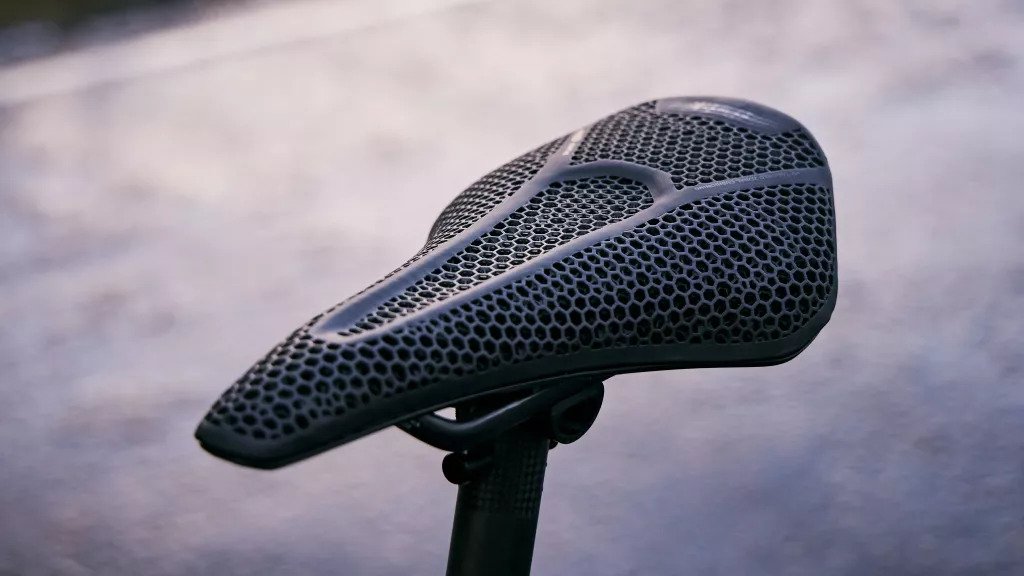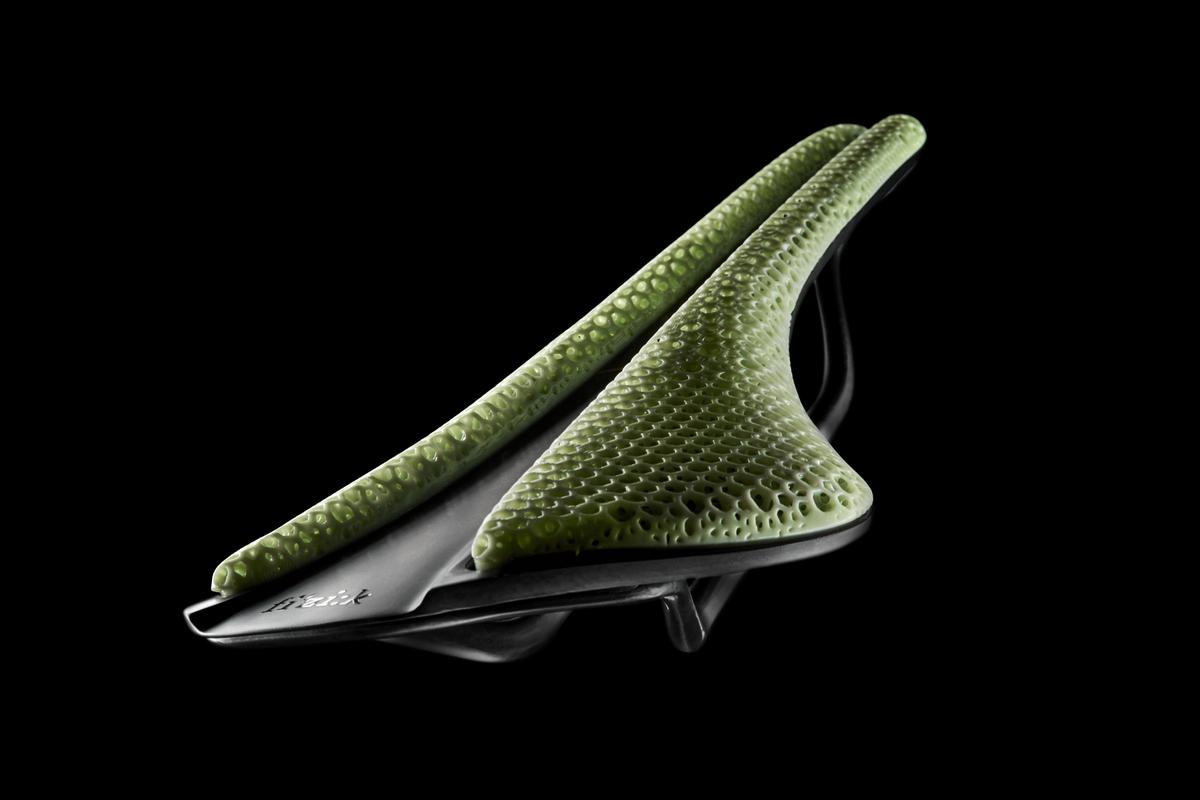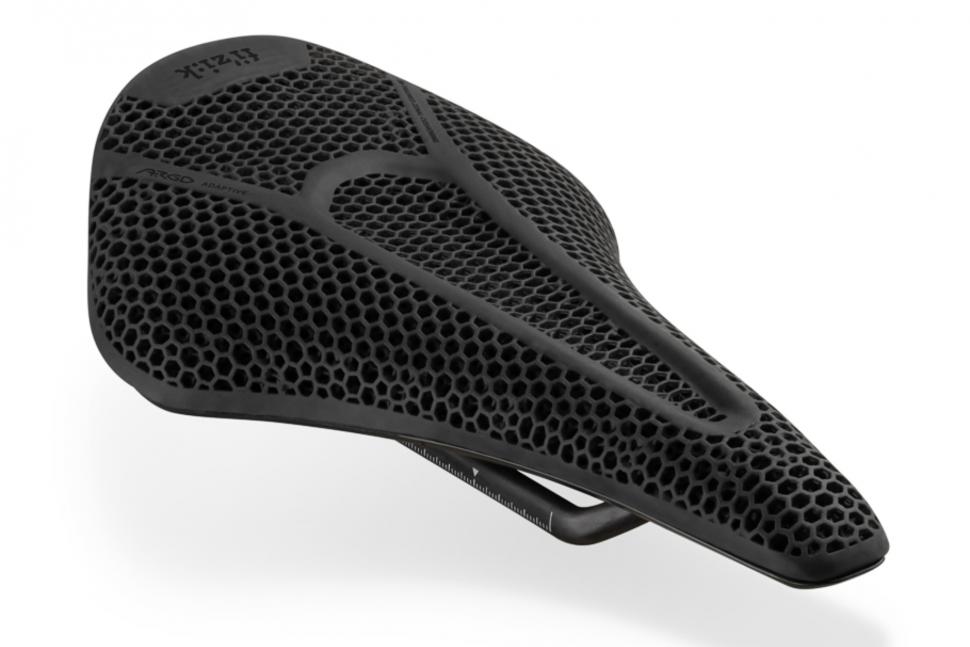US-based cycling equipment manufacturer Fizik has launched its latest 3D printed saddle, the Argo Adaptive short-nose saddle.
Making its debut at the Sea Otter cycling show, the saddle features a 3D printed lattice cushioning manufactured using Carbon’s Digital Light Synthesis (DLS) 3D printing technology, which is designed to improve comfort and optimize a rider’s posture.

Fizik and 3D printing
The Argo Adaptive is the latest addition to Fizik’s 3D printed saddle range, which began with the launch of the Antares Adaptive model in 2019. The firm worked with Carbon to produce the 3D printed saddle using the latter’s DLS technology, which at the time was said to have unlocked “a new era” in saddle design and manufacturing by Fizik Brand director Luca Mathia Bertoncello.
The partnership with Carbon was born out of the firm’s ‘Concepts’ initiative, a cross-disciplinary consortium of leading industry experts and academics that aims to position Fizik at the forefront of cycling innovation.
By leveraging 3D printing for the design of its saddles, the Fizik team was able to address elements such as power transfer, shock absorption, stability, and comfort according to a cyclist’s needs.

Carbon DLS for consumer products
Carbon’s DLS 3D printing technology is an SLA-based process that uses digital light projections in tandem with oxygen-permeable optics to cure photopolymer resins into 3D parts. In addition to Fizik, the technology has been leveraged by multiple big-name brands within their consumer products to yield performance benefits under the ‘Crafted by Carbon’ tagline.
For instance, Carbon has worked with fellow bike manufacturer Specialized to 3D print its S-Works Power Saddle in an attempt to establish DLS as the standard in saddle technology, and more recently with backpack manufacturer Osprey to produce a 3D printed lumbar pad for the firm’s new UNLTD pack series.
Perhaps Carbon’s most well-known partnership, though, is with sportswear giant Adidas, with whom it has created the 3D printed 4D midsole, the 4DFWD. The latest version of the 4DFWD was made available to the public in August last year, and was worn by athletes at the 2020 Olympic Games in Tokyo.

The Argo Adaptive
Nearly three years on from the Antares Adaptive launch, Fizik has unveiled its second 3D printed saddle, the Argo Adaptive. The Argo is the firm’s short-nosed model, a shape that is becoming increasingly popular on road bikes for riders wishing to maintain an aggressive riding position for extended periods of time.
The aim of the saddle shape and 3D printed adaptive cushioning is to keep the rider locked in place and avoid unnecessary changes of position. Fizik and Carbon have once again combined their expertise to optimize the saddle’s performance with a DLS 3D printed lattice cushioning, which is designed to provide more or less cushioning in certain areas to adapt to different riding positions.
The lattice structure achieves this while also resulting in a lighter saddle than conventional foam cushion pads. The zonal cushioning within the 3D printed lattice reduces the maximum pressure experienced by the rider and accounts for varying sit bone widths to ensure comfort.
The Argo Adaptive is being offered in two widths, 140mm and 150mm. The saddle is available in two models, an R1 with carbon rails, and a cheaper R3 with Fizik’s proprietary K:ium steel alloy rails priced at $299 and $259 respectively. Consumers will be able to purchase their Argo Adaptive at the end of April.

Subscribe to the 3D Printing Industry newsletter for the latest news in additive manufacturing. You can also stay connected by following us on Twitter and liking us on Facebook.
Looking for a career in additive manufacturing? Visit 3D Printing Jobs for a selection of roles in the industry.
Subscribe to our YouTube channel for the latest 3D printing video shorts, reviews, and webinar replays.
Featured image shows the Argo Adaptive short-nosed saddle’s 3D printed lattice. Photo via Fizik.


